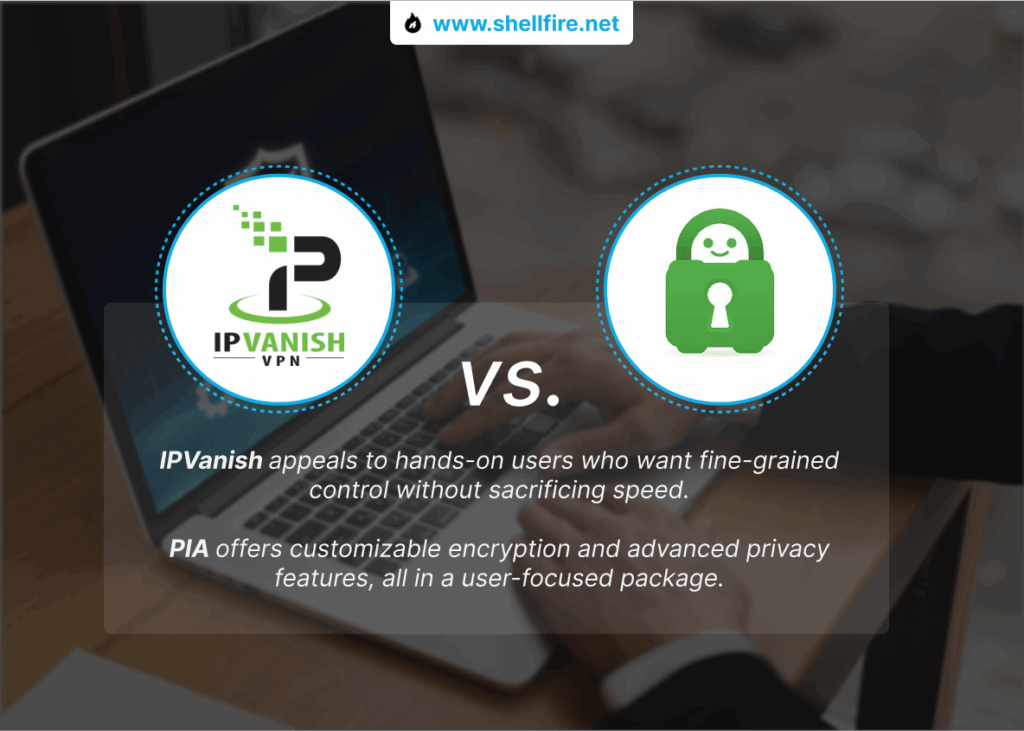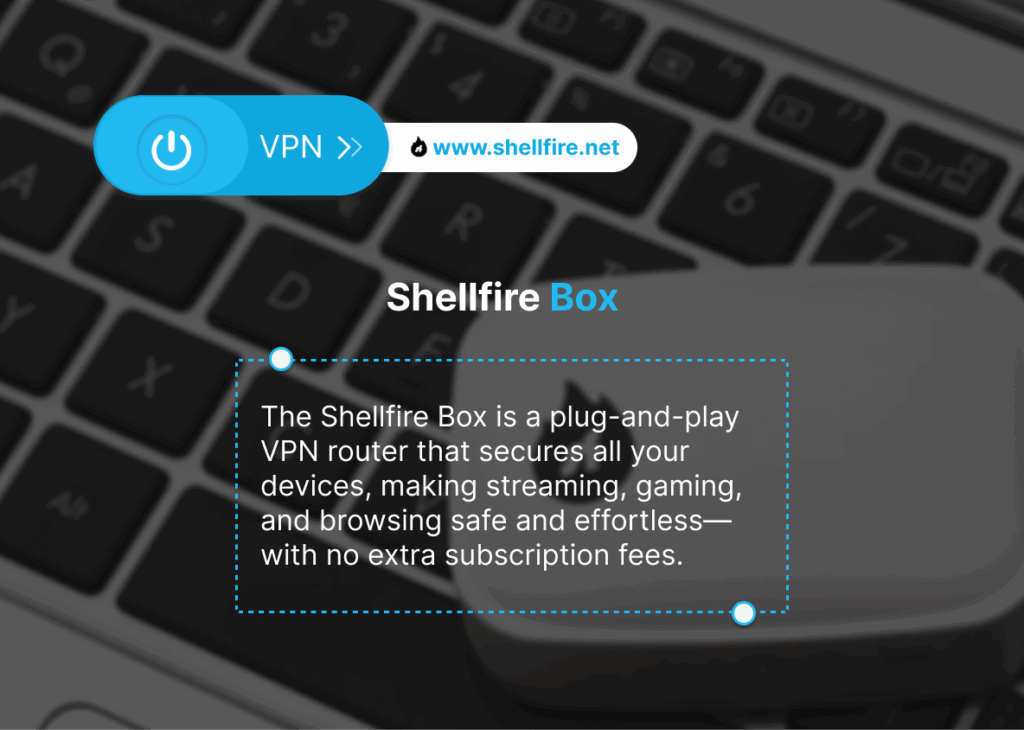IPVanish vs PIA
When you’re hunting for the right virtual private network (VPN), certain names pop up again and again. Among them, IPVanish and Private Internet Access (PIA) stand out, not just because they’re popular, but because they’ve earned solid reputations over time. They both offer reliable protection for your online privacy, a suite of robust features, and strong all-around performance. But while they overlap in some strengths, each has a personality of its own. Think of IPVanish as the speedster, great for those juggling multiple devices, while PIA is the privacy purist’s pick, loaded with customization options and a long-standing commitment to transparency.
In this deep dive, we’ll walk through every major aspect that matters: how fast they run, how safe they keep your data, what their apps feel like, and how well they handle things like streaming and torrenting. But instead of handing you a one-size-fits-all verdict, we’re going to help you figure out which VPN actually suits your needs. Are you after something simple and fast, something highly tweakable, or maybe something that just works across your whole household with zero fuss? By the end, you’ll know exactly where each service shines, and where it doesn’t.
Table of Contents
Key Points
- IPVanish allows unlimited simultaneous connections, making it ideal for tech-heavy households or users who switch between multiple devices often.
- Private Internet Access (PIA) appeals to users who value granular control and privacy, thanks to its open-source apps and a no-logs policy backed by independent audits.
- Certain users might find more comfort in plug-and-play VPN hardware that covers the entire home with minimal configuration effort.
Quick Comparison: IPVanish vs PIA
| Feature | IPVanish | Private Internet Access (PIA) |
|---|---|---|
| Headquarters | United States | United States |
| Simultaneous Connections | Unlimited | Up to 10 |
| Logging Policy | No logs | No logs (audited) |
| Monthly Price (approx.) | $11.99 | $11.95 |
| Annual Plan (approx.) | $47.89/year | $39.95/year |
| Free Trial | No (30-day money-back guarantee) | No (30-day money-back guarantee) |
At first glance, IPVanish and PIA might seem neck and neck, similar pricing, both US-based, no free trial but offering money-back guarantees. But look closer, and subtle differences begin to surface. IPVanish plays the convenience card with unlimited devices and streamlined settings. PIA, on the other hand, is for the user who likes to look under the hood, with transparency from open-source software to an independently audited no-logs policy. Of course, their U.S. base means jurisdictional privacy concerns are a shared factor, worth noting if data sovereignty matters to you.
That’s also where solutions like our Shellfire Box come into play. Unlike these software-centric options, Shellfire’s hardware-based approach bypasses some of the common setup limitations, especially when dealing with devices that don’t natively support VPN apps. It’s not tied to U.S. jurisdiction either, offering a different layer of privacy consideration that might appeal to users wary of Five Eyes alliances or regional surveillance laws.

Infrastructure & Global Coverage
| Metric | IPVanish | PIA |
|---|---|---|
| Total Servers | 2,200+ | 35,000+ |
| Server Countries | 75+ | 91+ |
| Server Locations | 100+ | 150+ |
| Owns Physical Servers | Yes (100% owned) | Partially (mix of owned and rented) |
With over 35,000 servers, PIA offers an enormous network, great for distributing traffic and unlocking region-specific content. IPVanish, though smaller in server count, controls its entire physical infrastructure. That full ownership means fewer third parties are involved in handling your data, reassuring if you’re big on security. If you’re chasing worldwide reach and server diversity, PIA delivers. But if you’d rather stick with a provider that manages everything in-house for tighter control, IPVanish could be more your speed.
Speed & Performance
| Metric | IPVanish | PIA |
|---|---|---|
| Average Download Speed Loss | ~20% | ~25% |
| Average Upload Speed Loss | ~18% | ~20% |
| Latency Increase | Low to moderate | Moderate |
| Best Protocol for Speed | WireGuard / IKEv2 | WireGuard |
When it comes to performance, IPVanish usually pulls ahead, especially on short or mid-distance servers. Thanks to its server ownership and efficient protocols, it’s generally snappier, with less latency. PIA holds its own, especially with WireGuard enabled, but can lag slightly behind in side-by-side testing. That said, the difference won’t matter much to the average user streaming a show or scrolling Instagram, but gamers and frequent remote workers will feel the edge that IPVanish offers.
Security & Privacy
| Feature | IPVanish | PIA |
|---|---|---|
| Encryption | AES-256 | AES-128 / AES-256 (user choice) |
| Protocols Supported | WireGuard, OpenVPN, IKEv2 | WireGuard, OpenVPN, IKEv2, L2TP/IPSec |
| Kill Switch | Yes | Yes |
| No-Logs Policy | Yes, but not independently audited | Yes, with public audit (2022) |
| Open Source Apps | No | Yes |
On the privacy front, PIA takes the lead with full transparency, its open-source apps allow users and developers alike to verify the code, and its no-logs policy has been independently confirmed through a public audit. These aren’t just buzzwords; they’re real trust builders, especially if you’ve had reasons to be skeptical about digital security.
IPVanish has a no-logs policy too, but the lack of independent verification lingers in the minds of more cautious users. There’s also history to consider: a 2016 incident involving user data compliance with U.S. authorities dented its image. However, it has changed hands since then, and its current privacy stance is much more solid, but for those with a long memory, that footnote might still carry weight. If you’re looking for verifiable zero-knowledge assurance, PIA is the safer bet.
It’s also worth noting how PIA compares to other major privacy-focused VPNs like NordVPN, particularly for users who prioritize transparency and independent audits as core criteria.
Streaming Performance
| Platform | IPVanish | PIA |
|---|---|---|
| Netflix (US) | Yes (reliable) | Yes (requires manual region switch) |
| Disney+ | Yes | Yes |
| BBC iPlayer | No (inconsistent) | Yes |
| Amazon Prime Video | Yes | Yes |
| Hulu | Yes | Yes |
Streaming’s a big one, and both VPNs get the job done, for the most part. IPVanish offers a more “it-just-works” vibe for U.S.-based services like Netflix, Hulu, and Prime Video. You open the app, connect, and stream without a hitch.
PIA, however, edges ahead when you’re trying to break past stricter geo-blocks. It does require a bit more fiddling, like manually selecting regions, but once set up, it unlocks platforms that IPVanish struggles with, including BBC iPlayer. Plus, its Smart DNS feature adds another layer of flexibility for devices like smart TVs or consoles. If you’re more about streaming variety than convenience, PIA’s the stronger contender.
Looking for reliable streaming access across all devices?
Our Shellfire Box is designed to provide consistent access to your favorite streaming platforms, which can be a helpful solution if you’re experiencing issues with other VPNs.
Platform Compatibility
| Platform | IPVanish | PIA |
|---|---|---|
| Windows | Yes | Yes |
| macOS | Yes | Yes |
| Linux | Yes (CLI) | Yes (GUI & CLI) |
| iOS / Android | Yes | Yes |
| Smart TVs / Routers | Manual setup | Manual setup + Smart DNS |
| Browser Extensions | No | Yes (Chrome, Firefox, Opera) |
If you’re hopping between devices or platforms, PIA clearly offers a broader toolkit. It’s one of the rare VPNs that supports both GUI and command-line on Linux, and the Smart DNS feature is a win for non-native apps like those on smart TVs. The browser extensions, while sometimes overlooked, are surprisingly handy for lightweight browsing sessions.
IPVanish is a little more streamlined, it covers all the basics, from mobile to desktop, but lacks extras like Smart DNS or browser plugins. For users who prefer to keep things simple and stick to core platforms, it still gets the job done. But if you like to tinker or want maximum reach across devices, PIA is the better-equipped choice.
Performance in Censorship-Heavy Countries
| Country | IPVanish Rating | PIA Rating |
|---|---|---|
| China | Low | Moderate (with obfuscation) |
| Russia | Low | Moderate |
| Iran | Poor | Moderate |
| Turkey | Moderate | High |
| UAE | Low | Moderate |
For users in tightly restricted internet regions, PIA has the upper hand. Thanks to its built-in obfuscation tools, it can camouflage VPN traffic more effectively, making it harder for authorities to block. This feature makes a real difference in countries like China, Iran, or Russia, where standard VPNs often get detected and disabled.
IPVanish unfortunately falls short in this department. Without stealth features or advanced masking capabilities, it’s far less reliable in censorship-heavy environments. That said, it still performs decently in places with moderate restrictions like Turkey. If avoiding censorship is a priority, PIA is the better-equipped contender.
User Experience & Apps
| Category | IPVanish | PIA |
|---|---|---|
| App Interface | Simplified, clean | Feature-rich, technical |
| Ease of Use | Beginner-friendly | Intermediate to advanced |
| Stability | Very stable | Stable |
If you’re the kind of person who just wants to hit “connect” and be done with it, IPVanish is likely your style. Its interface is minimalistic, clean, and intuitive, even if you’ve never used a VPN before. The setup process is smooth, and the overall experience is straightforward from start to finish.
PIA, in contrast, caters to users who enjoy digging into settings. The app offers granular control over encryption levels, ports, and protocols, making it a paradise for tech-savvy users. But with that comes a steeper learning curve, which may not be ideal for beginners. Both apps are reliable, but the right choice depends on your comfort level and how much control you want.
Alternatively, the Shellfire Box offers an experience that eliminates the learning curve altogether. Instead of dealing with app interfaces or configuration menus, it secures every device in your home from the moment you plug it in. For households with a mix of tech confidence levels, or devices that aren’t VPN-compatible, it provides a level of simplicity and coverage that’s tough to beat.
Customer Support
| Support Feature | IPVanish | PIA |
|---|---|---|
| Live Chat | Yes (24/7) | Yes (24/7) |
| Email Support | Yes | Yes |
| Knowledge Base | Extensive | Extensive |
| Average Response Time | Under 2 hours | Under 4 hours |
Both providers have solid support systems in place. You’ll find well-organized help centers, guides, and quick-response teams ready via live chat. IPVanish typically responds a bit faster, especially when you catch them on chat, but PIA is no slouch either. Where PIA stands out is in the depth of its documentation, which reflects its technical focus.
If you expect to need hands-on help, IPVanish might feel more accessible. If you’re the DIY type who prefers combing through detailed support articles and forums, PIA’s resources will be more than enough.
Additional Features
| Feature | IPVanish | PIA |
|---|---|---|
| Split Tunneling | Yes (Android & FireOS) | Yes (All platforms) |
| Ad & Tracker Blocker | No | Yes (PIA MACE) |
| Obfuscation Tools | No | Yes |
| Port Forwarding | No | Yes |
| Smart DNS | No | Yes |
This is where PIA really stretches its legs. Features like split tunneling across all major platforms, built-in ad and tracker blocking (via PIA MACE), and port forwarding make it a favorite among advanced users. These are especially helpful for torrenting, optimizing streaming setups, or even hosting services behind a VPN.
IPVanish doesn’t try to compete on feature quantity, it focuses on simplicity and stability. You won’t find ad blocking or Smart DNS here, and split tunneling is limited to a couple of platforms. For users who just want fast, secure access without a buffet of settings, that’s more than enough. But if you’re the type who likes to customize your setup down to the last toggle, PIA delivers in spades.
Now, for users who care less about toggles and more about hassle-free functionality, Shellfire VPN presents a compelling alternative. It may not offer every advanced setting under the sun, but it excels in combining ease of access with reliable protection, particularly when used through the Shellfire Box. It’s well-suited to people who prefer secure connectivity across all their devices without micromanaging the technical details.
VPN Use Cases: Best Options for Streaming, Gaming, Torrenting & More
| Use Case | IPVanish | PIA |
|---|---|---|
| Streaming | ⭐⭐⭐⭐ | ⭐⭐⭐⭐⭐ |
| Torrenting / P2P | ⭐⭐⭐ | ⭐⭐⭐⭐⭐ |
| Gaming | ⭐⭐⭐⭐⭐ | ⭐⭐⭐ |
| Remote Work | ⭐⭐⭐⭐⭐ | ⭐⭐⭐⭐ |
| Budget Users | ⭐⭐⭐ | ⭐⭐⭐⭐⭐ |
| Censorship Resistance | ⭐⭐ | ⭐⭐⭐⭐ |
Best VPN for Streaming
PIA earns the streaming crown thanks to its ability to work with a wide range of regional platforms, including more restrictive ones like BBC iPlayer or specific Netflix libraries. Its Smart DNS feature also lets you access streaming services on devices that don’t support VPN apps, like some smart TVs and consoles.
IPVanish still holds strong for U.S.-based services like Netflix, Hulu, and Amazon Prime Video. It’s ideal for users who want things to just work, without tweaking. If your needs are simple and mostly centered on U.S. content, IPVanish delivers.
Another route worth considering is our Shellfire Box, which offers seamless VPN protection for smart TVs, gaming consoles, and other non-traditional devices. While it may not support every regional platform out of the box, it shines when you want secure, reliable access to streaming services across an entire household, especially without having to install apps or change network settings on each device.

Best VPN for Torrenting / P2P
PIA checks all the boxes here, port forwarding, obfuscation, and a verified no-logs policy make it a standout for serious torrenting users. It’s designed for privacy and efficiency, and it shows.
IPVanish does support torrenting and performs well in terms of speed, but it doesn’t offer extras like port forwarding or stealth features. It’s fine for casual use but not ideal if you want a higher level of control and anonymity.
For a broader perspective, it can be helpful to see how IPVanish stacks up against other P2P-friendly options like CyberGhost, especially if torrenting is a central part of your VPN usage.
Best VPN for Gaming
If ping and packet loss matter, IPVanish comes out ahead. Its owned servers and strong protocol support mean lower latency and smoother gameplay, especially on North American and European servers.
PIA isn’t bad by any means, but can sometimes introduce slightly more delay. For everyday gaming, it works well, but for competitive sessions, IPVanish has the better track record.
That said, for console gamers or households with multiple players online simultaneously, the Shellfire Box offers a practical solution. It protects the entire network with minimal performance drop, and eliminates the need for VPN configuration on individual consoles, especially helpful in setups where convenience and stable ping matter as much as privacy.
Best VPN for Remote Work
IPVanish excels in remote work environments, offering quick, reliable connections that support video conferencing, large file uploads, and secure browsing. Its ease of use also means fewer IT headaches, especially in small teams or solo setups.
PIA holds its own but might require more setup time to match IPVanish’s plug-and-play simplicity. It’s great if your role involves extra security layers or technical infrastructure, but less so for quick deployment.
Best VPN for Budget-Conscious Users
No contest here, PIA dominates with some of the lowest long-term subscription costs in the industry. Its multi-year deals often include extra perks like cloud storage or antivirus options, making it a solid investment.
IPVanish is a bit more expensive annually, but the unlimited device policy might justify the price for families or shared households. Still, if you’re stretching every dollar, PIA gives more value per cent.
Best VPN for Censorship-Heavy Countries
PIA clearly leads, thanks to its built-in obfuscation tools, flexible configuration options, and strong reputation among users in restricted regions. It’s well-suited to bypassing firewalls and deep packet inspection, which can be lifesavers in countries like China or Iran.
IPVanish just isn’t built for this scenario. Without stealth tools, it struggles in environments with aggressive content filtering. It works better in moderately restricted areas, but it’s not the go-to for heavy censorship resistance.
Conclusion
Choosing between IPVanish and Private Internet Access isn’t about which is “better” in a vacuum, it’s about which one suits your everyday internet life. If you want a VPN that’s fast, straightforward, and lets you cover a dozen devices without even thinking about it, IPVanish is a fantastic fit. It’s ideal for families, streamers, gamers, and anyone who prefers simplicity without sacrificing performance.
If, on the other hand, you want to fine-tune your VPN experience, maybe you care deeply about open-source transparency, or need features like port forwarding or Smart DNS, then PIA is your go-to. It’s also the better pick in tough censorship environments or for budget-conscious users who want the best bang for their buck.
That said, there’s a third option worth considering, especially if ease of use and full-home coverage are top priorities. The Shellfire Box, paired with the Shellfire VPN service, offers a truly seamless setup with plug-and-play functionality that doesn’t require any tech know-how. It’s especially handy for households with a mix of tech users or devices that don’t support traditional VPN apps. While IPVanish and PIA both have strong software solutions, Shellfire’s hardware-based approach offers unique advantages that shouldn’t be overlooked.

